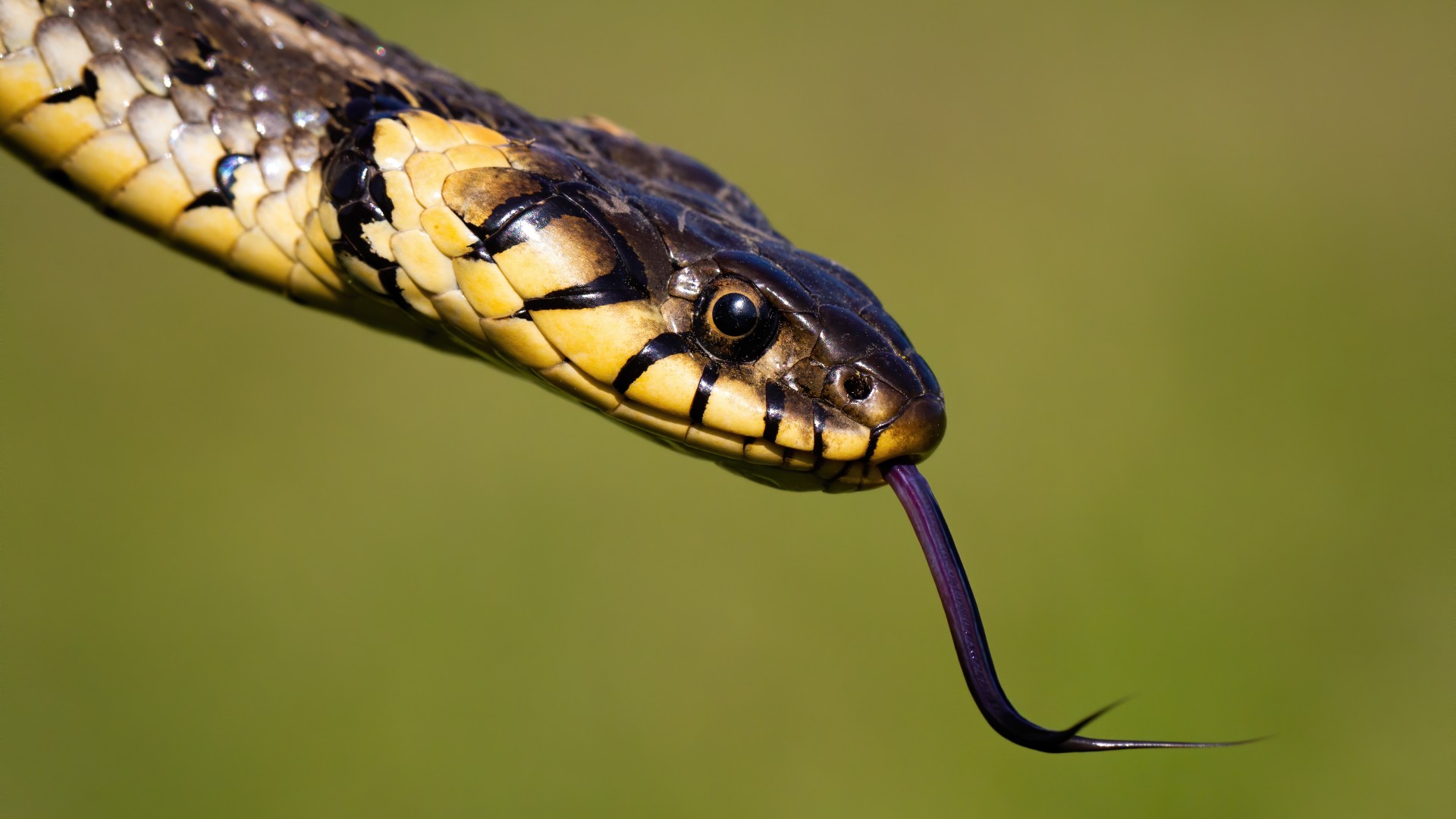
How do snakes hiss if they don't have front teeth?
Snakes have a special technique that lets them hiss.

Dogs say "woof," cats say "meow" and snakes say "sss." To make this sound, humans have to position their tongues against their front teeth. Snakes don't have front teeth, so how can they make this sound — and sometimes even stick out their tongues at the same time?
It turns out that snakes make that hissing noise a bit farther back in the respiratory system than we do, in a structure called the glottis. The glottis is a tiny opening at the bottom of the snake's mouth that opens when the snake breathes.
The glottis is connected to the trachea, or windpipe, which itself is connected to the snake's lung. Snakes have only one functioning lung; the other is vestigial, meaning it’s now a small remnant of a larger, functional organ that existed in the snake’s evolutionary ancestors. The functioning lung is made up of two parts.
Related: Do snakes have ears?
"There's the vascular lung; that's what our lungs do, so it absorbs oxygen and things like that," David Penning, an assistant professor of biology at Missouri Southern State University, told Live Science. "The back half of the lung is what's called the saccular lung, and it's basically like an old-timey fireplace bellow. It's just an empty balloon for nothing but just holding air."
"So when a snake goes to hiss, it will expand its ribs, take in a big deep breath and then just exhale for a really long period of time," Penning said.
The hissing noise is a result of that fast-moving air passing through the glottis.
Sign up for the Live Science daily newsletter now
Get the world’s most fascinating discoveries delivered straight to your inbox.
"It's literally just air passing through a small opening," Penning said. "They can change the volume of it, by squeezing their ribs harder and pushing out more air, but it's really just a result of air passing through a small tubular column that makes the hiss noise."
That means their tongues have nothing to do with it. "They're two unrelated things," Penning said.
"When their tongue comes out, they're trying to capture volatile organic compounds in the air," he said, referring to chemicals that float on air and are often aromatic. "The two forks give them directional senses of chemicals, so if they pick up more of a coyote smell on the left side than the right, they know that perhaps that's where the chemical is coming from.
"The tongue flick is for them to gather information," Penning added. "The hiss is just to keep that distance or maintain being intimidating and things like that."
Unlike other animals, snakes make just one sound for one purpose: defense. The hiss doesn't convey information or even vary much from situation to situation, Penning said. "It comes out almost no different than white noise."
Still, that sound can come out differently from species to species. The king cobra (Ophiophagus hannah), for example, can "growl."
"In the trachea, they have extra air sacs, and they can slowly release air from those," Penning said. "And it sounds different — a kind of guttural, lower hum sound. Definitely more vibrational bass sound than a traditional hiss."
"Then the bull snake [Pituophis catenifer sayi] in North America, it hisses, but it has some ridges in its esophagus that make it kind of rattly sounding, like something's tinkering around in there."
But no matter the sound, the message is the same: Stay away. Heeding that warning is as good for you as it is for the snake.
"If you hear a hiss, you're hearing an animal in distress," Penning said. "And so backing away or leaving it alone would be the [right] move."
Originally published on Live Science.

Ashley Hamer is a contributing writer for Live Science who has written about everything from space and quantum physics to health and psychology. She's the host of the podcast Taboo Science and the former host of Curiosity Daily from Discovery. She has also written for the YouTube channels SciShow and It's Okay to Be Smart. With a master's degree in jazz saxophone from the University of North Texas, Ashley has an unconventional background that gives her science writing a unique perspective and an outsider's point of view.









